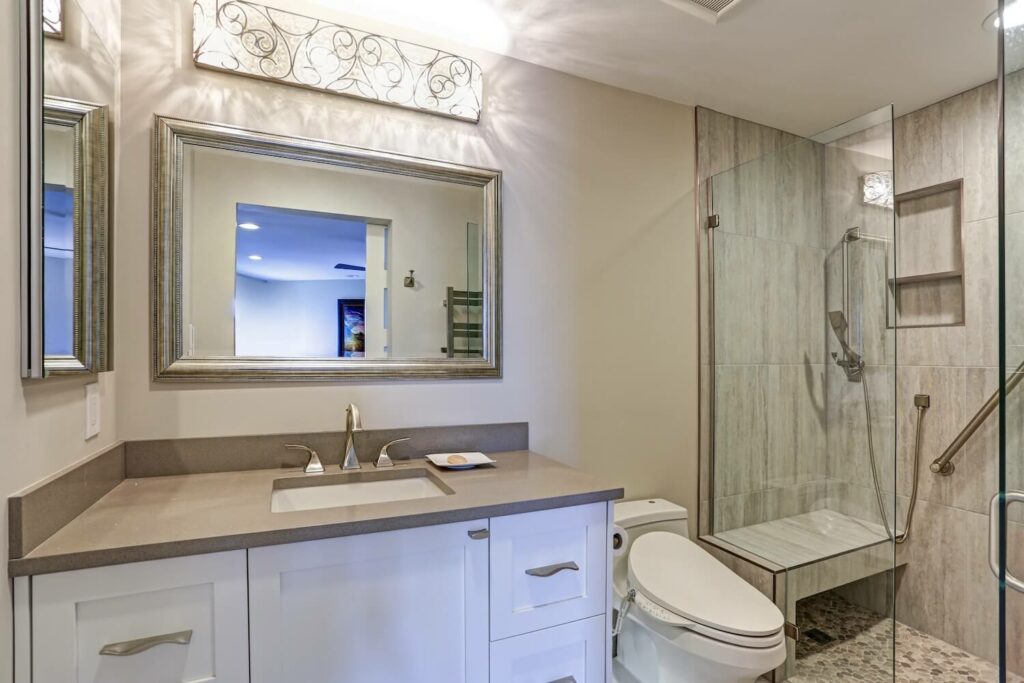Creating an accessible home environment is essential for individuals with disabilities or mobility challenges. Whether it’s due to aging, an accident, or a lifelong condition, many people require modifications to their living spaces to maintain independence and improve quality of life. However, planning and executing these modifications can be complex.
Here are 10 common mistakes to avoid when planning home accessibility modifications.
1. Not Assessing Current and Future Needs
Mistake: Jumping into modifications without a comprehensive assessment of current and anticipated future needs.
Solution: Begin by evaluating the individual’s current mobility challenges and lifestyle requirements. Consider potential changes in mobility, such as the need for a wheelchair or walker in the future. Consulting with healthcare professionals or occupational therapists can provide valuable insights and recommendations.
2. Overlooking Safety Measures
Mistake: Focusing solely on accessibility and neglecting safety considerations.
Solution: Safety should be a top priority. Install grab bars in bathrooms, ensure non-slip flooring, and maintain adequate lighting throughout the home. Safety measures are crucial to prevent accidents and injuries, especially in areas prone to slips and falls.
3. Choosing Inappropriate Materials and Fixtures
Mistake: Selecting materials and fixtures that are not durable, easy to maintain, or suitable for accessibility needs.
Solution: Opt for high-quality, durable materials that are easy to clean and maintain. Choose fixtures that are designed specifically for accessibility, such as lever handles instead of knobs and faucets with easy-to-turn handles.
4. Not Considering Universal Design Principles
Mistake: Overlooking universal design principles that benefit everyone, not just individuals with disabilities.
Solution: Incorporate universal design principles into your home modifications. Features like wide doorways, zero-step entrances, and lever-style door handles are beneficial for people of all ages and abilities, promoting inclusivity and adaptability.
5. Not Planning for Future Changes
Mistake: Failing to plan for future changes and adaptations as needs evolve.
Solution: Design your home modifications with flexibility in mind. Consider modular solutions that can be easily adjusted or expanded as required. This approach allows for future adaptations without the need for extensive renovations.
6. Overlooking Professional Expertise
Mistake: Attempting to complete complex accessibility modifications without professional assistance.
Solution: While some modifications can be DIY projects, many require specialized knowledge and skills. Collaborate with professionals, such as architects, contractors, and occupational therapists, to ensure the modifications are safe, functional, and compliant with relevant standards.
7. Underestimating Costs
Mistake: Underestimating the costs associated with home accessibility modifications.
Solution: Create a detailed budget that includes all potential expenses, such as materials, labor, permits, and professional fees. It’s essential to account for unforeseen costs to avoid budget overruns and financial stress.
8. Not Seeking Input from the Individual
Mistake: Excluding the individual from the planning process and not considering their preferences and needs.
Solution: Involve the individual in the planning and decision-making process. Their input is invaluable for creating modifications that meet their specific needs and preferences, enhancing their sense of autonomy and satisfaction with the changes.
9. Rushing the Planning and Implementation Process
Mistake: Rushing through the planning and implementation process without thorough research and consideration.
Solution: Take your time to research, plan, and implement the modifications carefully. Rushing can lead to oversights, mistakes, and suboptimal solutions that may need costly corrections in the future. Patience and thoroughness are key to successful home accessibility modifications.
A Few More Tips for Planning Home Modifications
Maintaining Communication and Flexibility
Throughout the modification process, maintaining open communication with all parties involved is crucial. Regular updates and discussions ensure that everyone remains informed and can address any concerns or adjustments promptly. Additionally, maintaining flexibility is essential, as unforeseen challenges or changes in circumstances may require modifications to the initial plans.
Investing in Long-Term Solutions
While it may be tempting to opt for quick fixes or temporary solutions, investing in long-term modifications can yield significant benefits in the future. Durable materials, quality craftsmanship, and thoughtful design considerations contribute to the longevity and sustainability of the modifications, reducing the need for frequent repairs or replacements.
Conclusion: Creating Accessible and Inclusive Homes
In conclusion, planning home accessibility modifications requires careful consideration, collaboration, and a commitment to inclusivity. By avoiding common mistakes, such as overlooking safety measures, neglecting future needs, and underestimating costs, we can create living spaces that empower individuals with disabilities and promote independence and dignity.
Moreover, embracing universal design principles, seeking professional expertise, and leveraging technology can further enhance the accessibility and functionality of the home environment. By prioritizing communication, flexibility, and long-term investments, we can create homes that not only meet the immediate needs of individuals with disabilities but also adapt and evolve to support changing circumstances over time.
Ultimately, creating accessible and inclusive homes is not just about making physical modifications—it’s about creating environments that foster independence, dignity, and belonging for all individuals, regardless of their abilities. By working together and embracing a commitment to accessibility, we can create communities where everyone can thrive and participate fully in all aspects of life.
Ready to transform your home into an accessible haven? Don’t let these common mistakes hinder your plans. Reach out to Thrive Homes today and let’s start creating a space that’s tailored to your needs and lifestyle. Your dream of a more accessible home is just a call away.

